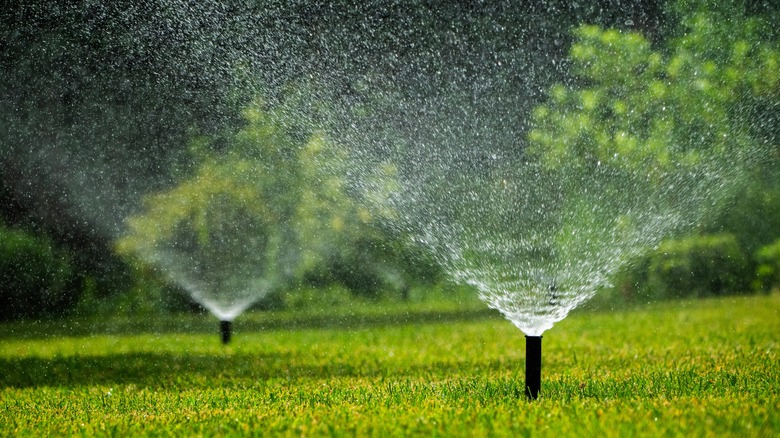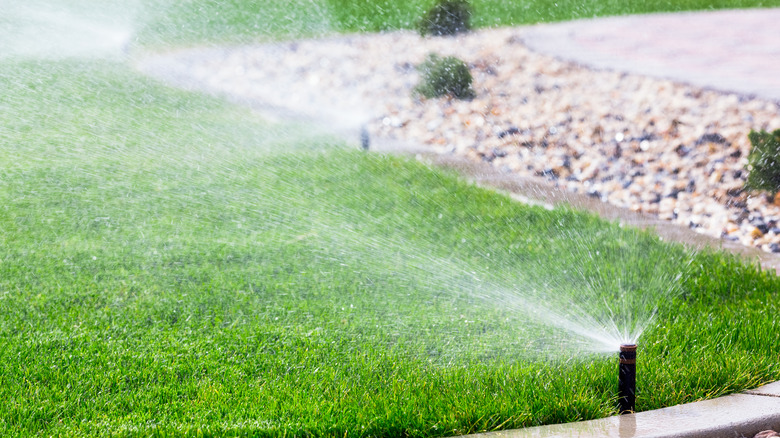The Best Time Of Day To Water The Lawn For Healthy Grass
It's no secret that lawns require a lot of water to grow their best. Unfortunately, having a healthy lawn isn't as simple as just watering it constantly. Watering incorrectly or at the wrong time of day can just waste water and, in some cases, could even harm your grass.
Established lawns require approximately 1.5 inches of water per week. This may not seem like that much until you consider the size of your lawn. The average American lawn is a third of an acre, and providing each part of that with an inch of water adds up quickly, even with best practices. That's why it is essential to be as efficient as possible with caring for your lawn. Trying to consistently water your lawn in the early hours of the morning, roughly between 5 and 9 a.m., is one step you can take to care for your lawn without wasting water.
It's way better to water earlier than watering mid-day because less water is lost to evaporation during these hours. If those early morning hours aren't an option for you, then the afternoon is also a good option, though it often isn't as efficient as early morning. Watering during the night may seem like a good option, as little water can be lost to evaporation, but it makes grass far more prone to disease.
Small steps that help you water your lawn well
If you've just planted grass seeds, then you'll need to water them daily in most cases. Early morning is still the best time to water your newly planted lawn, and you don't need to water as deeply as you would with an established lawn. Just make sure the seeds and topsoil layer stay moist. If you plant the grass seeds under straw, this will help to keep them moist and protected.
There are additional steps you can take to make sure you waste as little water as possible while still providing your lawn with the hydration and care it needs. Remember that rain counts toward the inch and a half of water your lawn needs each week, so water less during rainy weeks. You should also angle your sprinklers to make sure you're only watering your lawn and not wasting water wetting your sidewalk or driveway.
The length you mow your lawn to can impact your grass's health and your water usage as well. The best length to cut grass is around 3 inches, as this creates a healthy lawn with as much drought tolerance as possible. And be sure to sharpen your mower's blade as needed. If the grass's edge is torn instead of cut, it's likely to lose more water.

